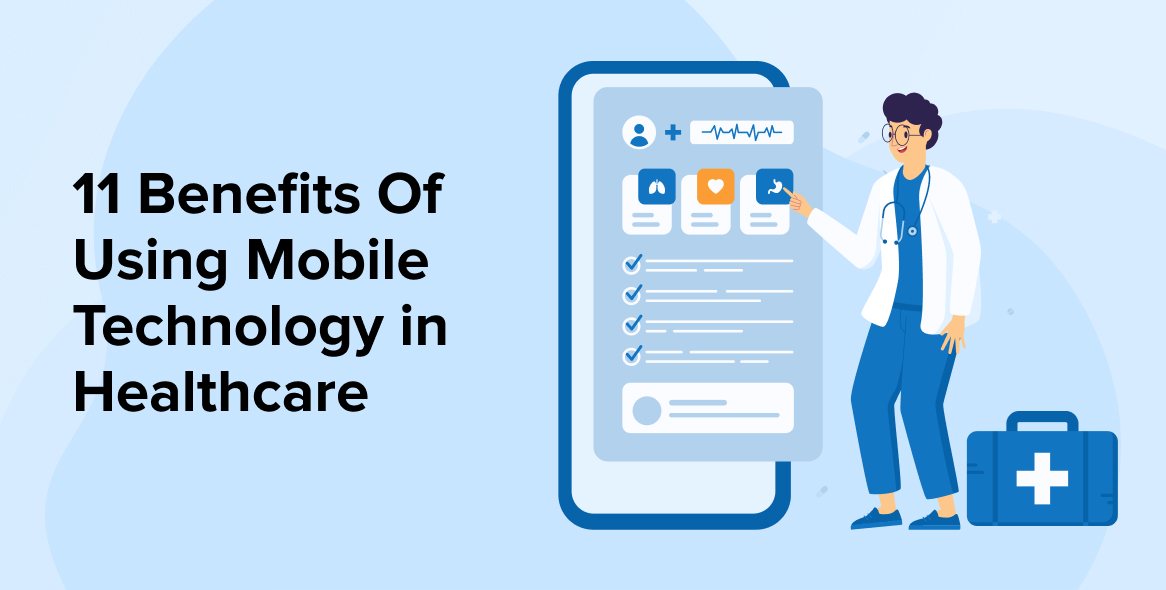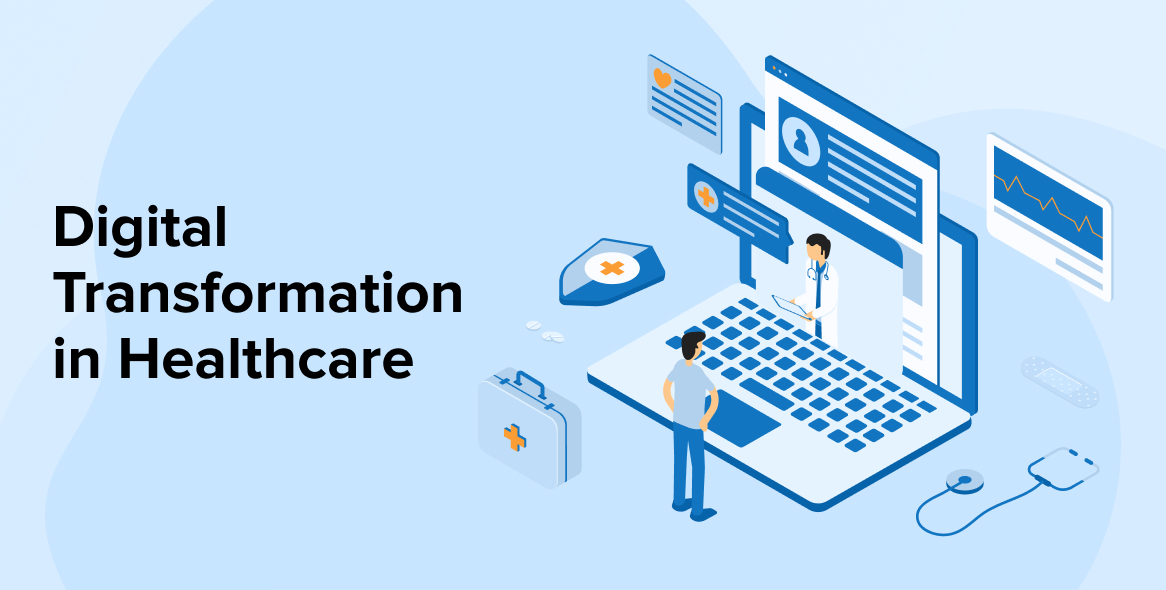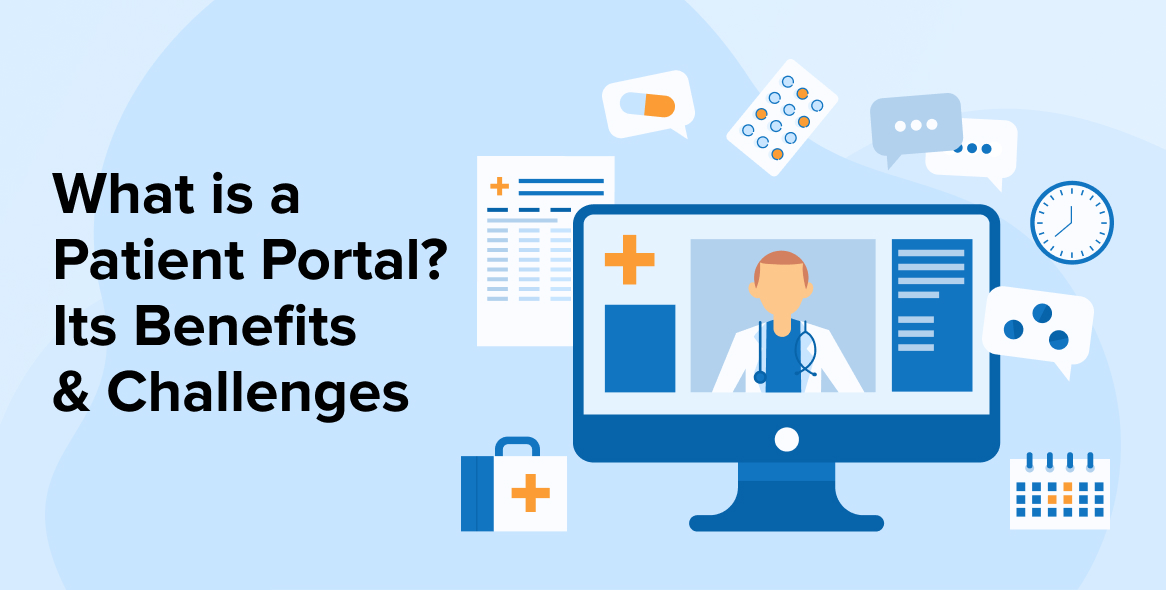
Digitalization during the COVID-19 pandemic has boosted the use of software solutions in the healthcare industry. Patients increasingly rely on medical device software to receive better care, while doctors and healthcare organizations use these tools to improve operational efficiency.
Hiring a reliable healthcare software development company is essential for delivering high-quality medical software. But software isn’t just developed by chance. These companies implement healthcare software testing and quality assurance practices to refine and release the product.
Read this blog to learn about healthcare application testing and how it benefits doctors and patients. We also discuss the challenges faced during the testing process and provide a detailed, step-by-step guide for testing software solutions within the healthcare domain.
1. Understanding Healthcare Software Testing
Healthcare software testing is about verifying the Quality Assurance (QA) of a medical application. Healthcare solutions are complex, it is crucial to follow a specific set of rules and logic to deliver improved and intended patient care.
Conducting thorough testing on a developed healthcare software to ensure that all functionalities work up to expectations. Typically done before the product launch, healthcare software testing also validates whether the app has the required licenses and if it is compliant with necessary regulations like HIPAA.
A healthcare solution is used by patients, practitioners, professionals as well and researchers, so it needs to meet the required standards.
2. Testing Types For Healthcare Software Solutions

Medical software usually comes with a wide range of features and hosts multi-level healthcare operations. To perform an overall quality check on the healthcare solution, you need to run different types of tests, such as:
2.1 Functionality Testing
Functionality testing is one of the most important kinds of software testing. It allows you to check all the functionalities of the healthcare software and verify whether they deliver the expected outcomes. This type of testing focuses on end users, the functional testing covers end-to-end flows. It tests your software functionalities against specific or documented requirements. Developers can easily automate these tests to reduce testing costs and time.
2.2 Security and Compliance Testing
Healthcare software testing is required to ensure that your software is completely secure. This testing helps identify and mitigate vulnerabilities that lead to any data breach or unauthorized access. Even a simple code vulnerability can be leveraged by attackers to leak sensitive information.
Healthcare software applications not only manage user login details but also store patients’ personal information and medical histories. They also contain the hospital’s administrative data and research work. It is essential to implement proper security measures to protect this sensitive data. Ensure these protocols are working well using vulnerability assessments, code reviews, penetration testing, and more.
You also need to ensure that your app complies with the relevant regulations. The rules vary depending on the geographic location of the end users. If you plan to launch your software in multiple countries, familiarize yourself with their healthcare regulations and ensure your app complies with them all. For the US, it’s HIPAA, GDPR for the EU, and so on. Violating these regulations would not only make your app vulnerable to a multitude of cyberattacks but also bring hefty penalties and class action lawsuits.
2.3 UI/UX Testing
Even if your application has no functionality or security issues, it won’t matter unless it offers an elegant UI/UX. Designers must consider that most patients would be senior citizens who may need help using digital health portals. Additionally, many tech-savvy users will prefer an innovative UI for the app. Therefore, it’s important to create a custom and intuitive UI that delivers a personalized user experience.
Through UI/UX testing, you can identify and resolve any issues with navigation in your healthcare application. Mainly, there are two testing phases for UI/UX of your healthcare software systems.
First, there is static healthcare application testing. In this test, QA analysts review a static app designed using Figma or a similar platform. They check whether the app design meets the user’s requirements.
During the second testing phase, testers perform a dynamic review to check how healthcare software handles different requests and performs under dynamic conditions. While there are many more approaches to conducting UI/UX testing, the test cases must align with your testing objectives.
2.4 Interoperability Testing
It is necessary to test your healthcare software for interoperability. It’s a system that needs to work with other programs, interact with them, and share data efficiently. Interoperability testing ensures that different healthcare solutions like medical devices, electronic health records, administrative tools, etc, can work with seamless coordination.
The complexity of software increases as the system grows. With that, connectivity and data exchange become more crucial. In healthcare, failing to ensure interoperability with another system or device can lead to bad patient outcomes, financial loss, and a damaged reputation. Therefore, interoperability is one of the critical factors in healthcare software QA.
In healthcare interoperability tests, QA specialists would run requests manually to review the data exchange instances of the software and its compatibility with the FHIR standards. They also implement various test scenarios to analyze the system’s connectivity with third-party healthcare services.
2.5 Medical Device Testing
Let’s say you’ve tested your medical device software thoroughly, and there is no problem with it. But what if the medical device it is connected with fails? What if the medical device can gather data and track the vitals, but can’t send it further to the software or alert the doctor about the patient’s deteriorating condition in advance? This is why medical devices must also be tested thoroughly to ensure they function reliably when needed most.
The healthcare system and medical devices are connected through an IoT network. To ensure that a medical device works properly, it is essential to protect the IoT system against potential malfunctions, data inconsistencies, data exchange, connectivity, disruptions, and other issues.
Conducting a comprehensive test of a medical device ensures its functionality and integration capabilities. This allows medical professionals to easily monitor the health condition of their patients without any difficulty. You must also check if medical devices meet the regulatory requirements.
3. Why is Healthcare Software Testing Important?
Healthcare solutions play a vital role in providing medical services to patients nowadays. Any issues within the system can directly affect patient outcomes. In this section, we explore the top reasons why software testing is important.
3.1 Ease of Use
Healthcare application testing ensures that the final product is easy to use. Because any difficulty faced by the user in operating or working with the app can result in bad patient outcomes. Healthcare services are complex by nature. On top of that, medical software has numerous functionalities catering to different patient requirements. Therefore, the system should be easy for patients as well as healthcare providers to navigate, allowing them to easily complete their tasks.
3.2 Data Security and Privacy
One of the main purposes of using software solutions in the healthcare domain is to gather and store patient data in a single place. Because of its sensitive nature, medical information must be kept confidential. Therefore, developers must implement necessary security protocols, such as proper data encryption, to ensure the privacy of patients and the security of their information. Additionally, it is essential to identify and eliminate the security vulnerabilities in the application code to avoid data leaks and unauthorized access.
3.3 Performance
Healthcare applications must perform consistently under different scenarios because downtimes or dysfunction can have life-threatening consequences for patients. Therefore, performance testing is required to check how the app would function under peak loads and different strenuous conditions.
Healthcare software should be able to withstand power failure, unexpected spikes in usage or requests, low network bandwidth, offline conditions, and other scenarios. To make sure that your healthcare software remains stable, compatible, reliable, responsive, and easily accessible at any time, you have to test it under a wide range of scenarios.
You can measure its true performance only when it is under challenging or adverse scenarios. It is necessary to maintain the integrity of the healthcare system and to safeguard patient care.
3.4 Patient Safety and Satisfaction
Healthcare apps have a direct impact on patients’ lives. A well-functioning solution can help healthcare providers deliver better patient outcomes, whereas a single error, malfunction, or breach can cause irreparable damage.
Even if the user doesn’t have any medical condition, wrong data from the software can lead to wrong prescriptions, which would have adverse effects on the patients. Software testing is not only a way to verify that a healthcare app is secure and functional, but also ensures that patients get better care without any difficulty.
4. Step-by-Step Guide for Testing Medical Software

To find and resolve any issues or vulnerabilities in your medical app, you need a testing team to follow a carefully crafted quality assurance process. This process allows you to analyze and optimize the software to deliver improved healthcare services. In this section, we will discuss the different stages of your healthcare software testing process.
Step 1. Requirement Analysis
Requirements are the foundation of any medical software testing project. Analyzing them would help you understand the project criteria along with the goals and objectives. It will inform about the quality expectations and standard compliance requirements for the product.
Moreover, studying the documented requirements would also reveal potential risks and highlight any missing details in the project. Knowing every single requirement would give you an idea about the tests needed to verify their fulfillment.
If the requirements are ambiguous or immeasurable, then they need to be defined and assigned measurable metrics for proper testing.
Step 2. Test Planning
A test plan is a document that outlines the requirements, objectives, testing strategy, schedule, team, testing tools, deliverables, and costs. Understanding the testing requirements enables the planning of an effective testing strategy for the project.
Once the tester knows the requirements, they can determine the scope of the project, including the types of tests to run, the resources needed for it, writing test scripts for different scenarios, etc. Testers need to create a series of tests to check the usability, performance, and other aspects of a single feature.
Proper planning allows you to estimate how long the testing process will run and the costs associated with it. If carried out precisely, then it can deliver the expected results. Having analyzed all the requirements also helps in identifying potential risks along the way. This way, testers can proactively plan to avoid or eliminate the issues and lead the project to success.
Step 3. Functional and Non-Functional Testing
The actual tests start with functional testing. During this phase, the test engineers will check if all the functionalities of the healthcare software solution work up to expectations. If any errors are detected, they need to be documented and reported properly for further correction.
Once functional testing is complete, the QA engineer has to test the app for various factors to determine whether it is stable and secure. In this stage, the QA engineer examines the factors affecting the user experience by conducting performance testing, integration testing, usability testing, security testing, API testing, and more. Non-functional tests help maintain the compatibility and integrity of the software.
Step 4. Regression Testing
After the QA team reports all the bugs found during software development, the developers will revisit the code and make necessary changes to resolve all issues. However, sometimes, making changes to the code can break the existing functionality. Therefore, it is essential to carry out regression testing to ensure that the app works without any hiccups after the bug fixes.
When resolving bugs, developers need to take care that their modifications do not cause any functionality to break or any other piece of code to malfunction. Otherwise, the problem would escalate, leading to a significant technical debt.
If an error still prevails despite or because of the modifications, then regression testing is useful for finding it.
Step 5. Reporting
After each testing iteration, the testers and QA analysts must provide a detailed report about the performed testing activities and the outcomes. These reports would help understand whether the healthcare application meets the required standards and expectations, or does it needs more modifications before launching into the market.
These reports must be documented properly, along with the testing activities and the results, for future reference. A comprehensive test report will show you the bigger picture. It will indicate whether the app is ready to be used by healthcare professionals to deliver better care.
5. Common Healthcare Software Testing Challenges
The healthcare software testing process is not something one should take lightly. It is a necessity, and though it offers certain advantages, you might face some difficulties along the way. It is important to overcome these obstacles to ensure that your healthcare software runs smoothly.
5.1 Usability Issues
Usability is a factor to keep an eye on during medical software development. It affects the efficiency of the healthcare software as well as the productivity of medical professionals. Poor UI/UX is often the root cause of low usability, enabling users it be patients or doctors, to experience difficulties in performing critical tasks, input or retrieve data, and navigate the software.
A healthcare software testing plan must include usability testing with real-world scenarios. You can conduct user acceptance testing, cognitive walkthroughs, and heuristic evaluations with medical practitioners. Their feedback helps healthcare software providers refine the app so it has enhanced functionality and meets user requirements.
5.2 Security and Data Privacy
Healthcare software collects and manages a ton of sensitive patient data, so it is subject to data security and privacy protocols. However, mobile health apps have the lowest security and privacy standards, even though they are widely used to consume healthcare content and services. With the increasing number of data breaches and cybercrimes, app security remains a priority for healthcare providers as well as their top challenge. Implementing access control mechanisms and data encryption can help safeguard medical data effectively.
5.3 Regulatory Compliance
Healthcare software must adhere to relevant rules and regulations that vary from country to country. It is OAIC in Australia, GDPR in the European Union, PIPEDA in Canada, and HIPAA in the US. These are a set of standards the healthcare software must comply with otherwise, it may lead to heavy financial penalties and lawsuits.
Healthcare regulations are imposed to protect the patient’s data and privacy. It’s a legal obligation. Therefore, your healthcare software testing project must involve a compliance check, along with a rigorous validation and verification process.
These regulations not only have predefined standards for data security and privacy but also dictate performance criteria for healthcare applications. All of these aspects can be covered with a comprehensive testing strategy.
6. Conclusion
Healthcare software testing is much more than just examining a medical device’s software for potential issues and compliance. It’s about safeguarding medical data and ensuring enhanced patient outcomes.
Healthcare organizations leverage such solutions to increase their efficiency and deliver better services. If these software solutions are not up to the predefined standards, then digital healthcare services could prove to be ineffective. This could have a negative impact on patient outcomes.
Therefore, healthcare software testing is an unskippable and the most important aspect of the development process.






Comments
Leave a message...